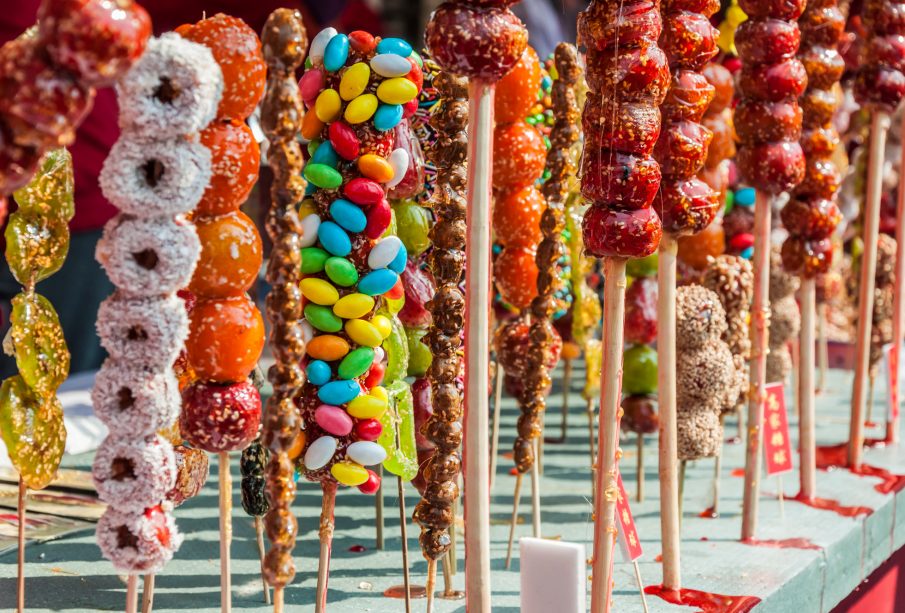Favourite Street Foods from Around the World

The following list, which includes nations from different continents, is only the tip of the street food iceberg. Of course, this list does not include Antarctica. Every Cuisine has its taste and flavour. Therefore, we avoid debating which nation’s street food is superior. Instead, along with some strange suspects, we feature some classic street food specialities.
Street Food of Argentina: Empanadas
The tastiest Empanadas come from the Salta area in the country’s northwest, despite being a mainstay of Argentine Cuisine and being found all across the country. Additionally, it is the only area where the spicy sauce is widely used. Hurrah!!
Street Food of Australia: Meat Pies
Hearty, flavorful, tasty, and affordable. Although there are vegetarian options as well, meat pies were a go-to fast snack or lunch during our travels around Australia. Even if you are in the middle of nowhere, which does happen a lot in Australia, you can typically find them anywhere, from gas stations to tiny eateries.
Street Food of Bolivia: Salteñas
Saltenas are empanada-like pockets filled with chicken or beef and topped with a characteristic baked crust that is somewhat sweet. The Saltenas were filled with chicken and ground beef, a cooked egg, herbs, and an olive. There are four types of spice: blazing, spicy, regular, and sweet. Bolivia has something for every traveler.
Street Food of Brazil (Bahia): Acarajé
The Bahia area is home to the Afro-Brazilian meal acarajé, although you can also get it in other regions of Brazil at markets and food stands. It is created with a spicy, mashed bean mixture typically mixed with crushed shrimp and formed into balls or patties before being fried in dendê oil (palm oil).
After that, it is typically topped (or packed, like a sandwich) with herbs, vegetables, salty shrimp (Camaro do sal), and a sauce. Salvador’s main squares have acarajé booths, but our favourite was at a beach nearby.
Street Food of Colombia: Arepa
Arepa is the greatest gluten-free comfort cuisine from Colombia. A fried circle of cornmeal dough is known as an arepa. They can be served either plain or packed with cheese (arepa de queso), eggs, or other ingredients as a side dish or starch to a meal. The filled types are tastier and more intriguing. As you travel around Colombia, it’s worthwhile to sample a few different arepa variations as each region has its own peculiarities.
Street Food of El Salvador: Pupusa
The most popular street food in El Salvador is pupusas, filled with corn tortillas. They are filled with refried red beans, cheese, and a splash of chicharron (salty pig rinds). Add pickled veggies and hot peppers on top. Delicious!
Street Food of Ethiopia: Sidewalk Coffee Ceremony
The first cup of coffee at a typical Ethiopian coffee ceremony will probably take at least twenty minutes to prepare, but the wait is unquestionably worthwhile. It would be best to try a sample before you can completely appreciate how refreshing coffee is to Ethiopian Cuisine.
Street Food of Guatemala: Chuchito
Our first destination in Central America was Guatemala. We took to it practically immediately in Antigua, where street food carts were prevalent during Semana Santa (Easter Week) celebrations and other times. This chuchito was covered in fresh guacamole, salsa, and cabbage. Chuchitos are Mexican tamales that are made of shredded meat and vegetables that have been crushed and cooked.
Street Food of Honduras: Baleada
Honduras’ traditional street food item, the baleada, is made using wheat flour in contrast to the rest of Central America, which is dominated by corn. And to be honest, this was a relief after three months of maize. Baleadas, which are stuffed with various types of meat, beans, cheese, and eggs, soon gained popularity in our country of Honduras.
Street Food of Laos: Or Lam
As many restaurants promote Thai curries as Lao Cuisine, it’s easy to visit Luang Prabang and be duped into believing you’re eating Lao food. We eventually located Or Lam, a hot stew made with pork, mushrooms, eggplant, lemongrass, and chillies, after asking about it. Khai paen, which is seasoned, dried river weed, and jaew bawng are also delectable foods.
Street Food of Madagascar: Mofo Anana
The savory spiced beignet fritters or pakoras that are the national dish of Madagascar are known as mofo and are one of our favorite dishes. Our favourite type was the fried fritters, mofo anana, packed with lush green strips and spices.
Throughout your travels in Madagascar, you may find them on menus in restaurants and hotels, markets, and on the street (make sure they are recently fried).
Street Food of Peru: Ceviche
The best meal we had while traveling around Latin America was in Peru. Particularly on the weekends, the cevicheria in the Surquillo market in Lima is bustling with customers. A substantial platter of mixed seafood ceviche costs $4–$5. It costs nothing to have a conversation about politics and family in Peru.
Street Food of South Africa: Bunny Chow
Bunny chow is just a slice of plain, white sandwich bread that has been hollowed out and filled with curry (or masala, if you like). It was allegedly planned to make it simple for plantation employees to transport their lunch to the fields. In South Africa, and more notably in the city of Durban, bunny chow is a culinary example of South Asian influence.
Street Food of Thailand: Street Side Red Curry
Our passion for street cuisine took hold in Thailand. Thailand is indeed worthwhile to come even only for the local Cuisine. The entire street food was mouth-watering.
While we know that Thai street cuisine consists of much more than just curries, our first trip to Bangkok was marked by a stunning plate of red shrimp curry garnished with fresh Thai basil.










